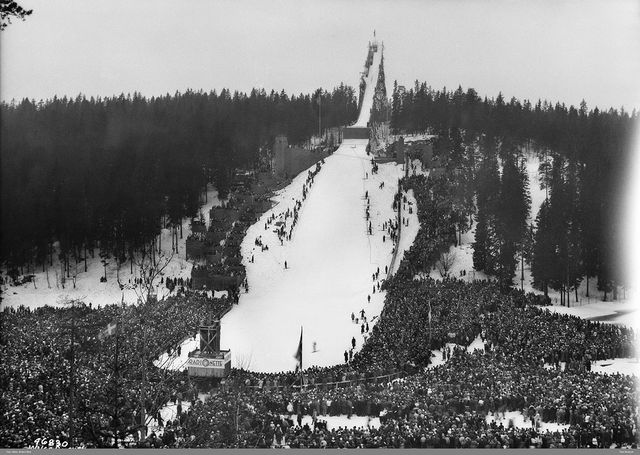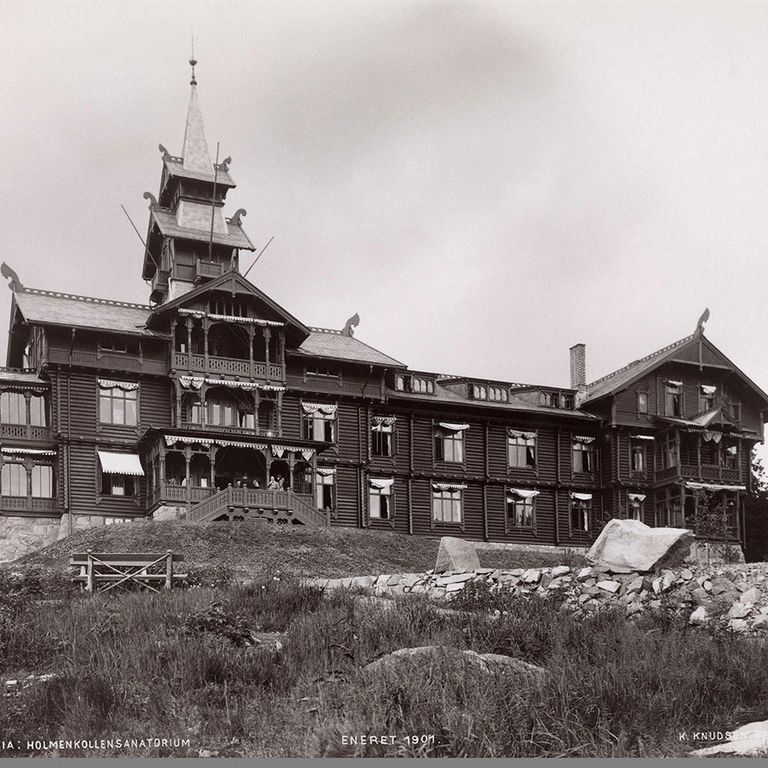In words and pictures: Holmenkollen

The area was connected to the city center through the Holmenkoll Line. The line went to Besserud in 1898, and was extended to Holmenkollen in 1915.
Holmenkollbakken
Holmenkollbakken opened in 1892. The hill is Norway's most visited tourist attraction, and is also one of the world's oldest ski jumps still in use. In addition to the ski jump, there is a cross-country and biathlon stadium. The Ski Museum is also located here, and is part of the Holmenkollen facility.
Other landmarks
Following the opening of the ski jump, several hotels and 'sanatoriums' were built in the area. Holmenkollen Sanatorium opened in 1891 and was later called a tourist hotel after the original tourist hotel burned down for the second time in 1914. Today, the hotel is named Scandic Holmenkollen Park Hotel.
From the ski resort, you can also spot the Holmenkollen Chapel. The chapel was designed by Holger Sinding-Larsen, who won an architectural competition in 1894. It was used as a prayer house in 1903, and consecrated as a chapel in 1913. The chapel was built in a national style with timber of massive dimensions.
In August 1992, the chapel was completely destroyed in an arson attack, but a new chapel based on the original drawings was erected shortly thereafter. This is the chapel that stands there today, consecrated in 1996 with minor changes compared to the original chapel.

Post-war period
The area around Holmenkollbakken was used as a military zone by the Germans during World War II. Here they established a camp with a mountain facility, which was later used by the Defence before the facility was purchased by Oslo municipality in 2007.
The residential area in Holmenkollen was extensively developed after the war with low-rise buildings, terraced houses, and apartment complexes. Holmenkollen is considered an exclusive residential area, and the development created conflicts with the original villas. Today, Holmenkollen belongs to the Vester Aker district and has about 9,200 inhabitants (2024).
Images and videos on other websites
- See more pictures at digitaltmuseum.no
- Watch the movie "Majorstuen Station, Holmenkollen Day 1924" on youtube.com
- Watch the movie "The Capital of Ski Competitions, 1958" on youtube.com
- Watch the movie "Holmenkollen – The Mecca of Skiing, 1982" on youtube.com
- Watch the movie "Toboggan Race in Korketrekkeren" on youtube.com